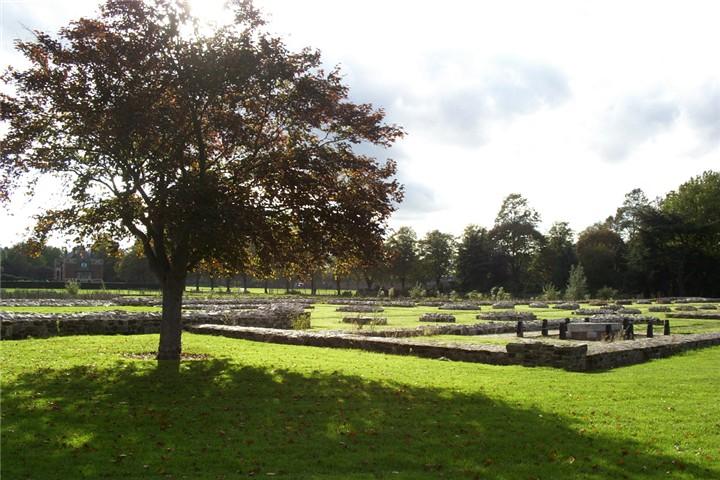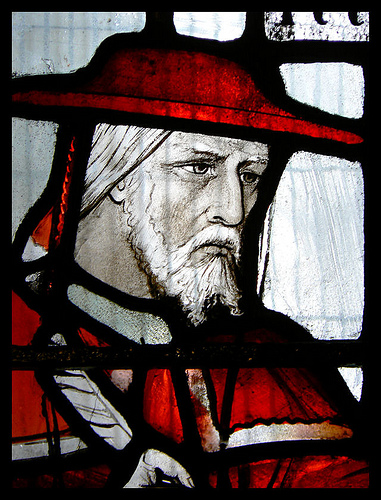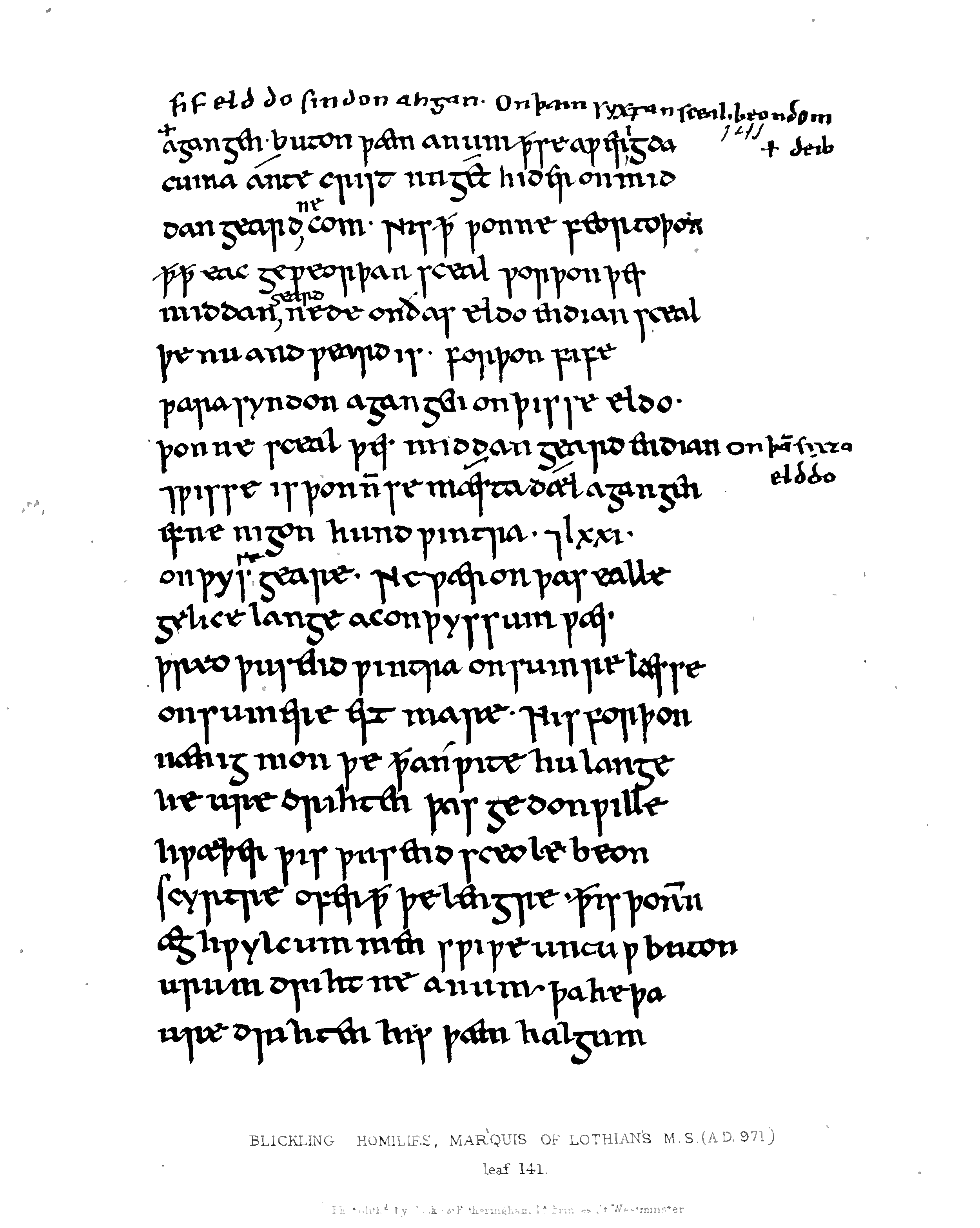|
J. Rawson Lumby
Joseph Rawson Lumby (1831–1895) was an English cleric, academic and author and divine, Norrisian Professor of Divinity from 1879 and then Lady Margaret's Professor of Divinity from 1892. Life He was the son of John Lumby of Stanningley, near Leeds, where he was born on 18 July 1831. He was admitted on 2 August 1841 to Leeds grammar school. In March 1848 he left to become master of a school at Meanwood; but he was encouraged to proceed to the university. In October 1854 he entered Magdalene College, Cambridge, where in the following year he was elected to a Milner close scholarship. In 1858 he graduated B.A., being bracketed ninth in the first class of the classical tripos. His subsequent degrees were M.A. 1861, B.D. 1873, D.D. 1879. Within a few months of graduation Lumby was made Dennis Fellow of his college, and began to take pupils. In 1860 he gained the Crosse scholarship, and in the same year was ordained deacon and priest in the diocese of Ely. For clerical work he had th ... [...More Info...] [...Related Items...] OR: [Wikipedia] [Google] [Baidu] |
Archbishop Of York
The archbishop of York is a senior bishop in the Church of England, second only to the archbishop of Canterbury. The archbishop is the diocesan bishop of the Diocese of York and the metropolitan bishop of the province of York, which covers the northern regions of England (north of the Trent) as well as the Isle of Man. The archbishop's throne ('' cathedra'') is in York Minster in central York and the official residence is Bishopthorpe Palace in the village of Bishopthorpe outside York. The current archbishop is Stephen Cottrell, since the confirmation of his election on 9 July 2020. History Roman There was a bishop in Eboracum (Roman York) from very early times; during the Middle Ages, it was thought to have been one of the dioceses established by the legendary King Lucius. Bishops of York are known to have been present at the councils of Arles (Eborius) and Nicaea (unnamed). However, this early Christian community was later destroyed by the pagan Anglo-Saxons and ... [...More Info...] [...Related Items...] OR: [Wikipedia] [Google] [Baidu] |
Thomas More
Sir Thomas More (7 February 1478 – 6 July 1535), venerated in the Catholic Church as Saint Thomas More, was an English lawyer, judge, social philosopher, author, statesman, and noted Renaissance humanist. He also served Henry VIII as Lord High Chancellor of England from October 1529 to May 1532. He wrote ''Utopia'', published in 1516, which describes the political system of an imaginary island state. More opposed the Protestant Reformation, directing polemics against the theology of Martin Luther, Huldrych Zwingli, John Calvin and William Tyndale. More also opposed Henry VIII's separation from the Catholic Church, refusing to acknowledge Henry as supreme head of the Church of England and the annulment of his marriage to Catherine of Aragon. After refusing to take the Oath of Supremacy, he was convicted of treason and executed. On his execution, he was reported to have said: "I die the King's good servant, and God's first". Pope Pius XI canonised More in 1935 as a martyr ... [...More Info...] [...Related Items...] OR: [Wikipedia] [Google] [Baidu] |
John E
John is a common English name and surname: * John (given name) * John (surname) John may also refer to: New Testament Works * Gospel of John, a title often shortened to John * First Epistle of John, often shortened to 1 John * Second Epistle of John, often shortened to 2 John * Third Epistle of John, often shortened to 3 John People * John the Baptist (died c. AD 30), regarded as a prophet and the forerunner of Jesus Christ * John the Apostle (lived c. AD 30), one of the twelve apostles of Jesus * John the Evangelist, assigned author of the Fourth Gospel, once identified with the Apostle * John of Patmos, also known as John the Divine or John the Revelator, the author of the Book of Revelation, once identified with the Apostle * John the Presbyter, a figure either identified with or distinguished from the Apostle, the Evangelist and John of Patmos Other people with the given name Religious figures * John, father of Andrew the Apostle and Saint Peter * Pope J ... [...More Info...] [...Related Items...] OR: [Wikipedia] [Google] [Baidu] |
Francis Bacon
Francis Bacon, 1st Viscount St Alban (; 22 January 1561 – 9 April 1626), also known as Lord Verulam, was an English philosopher and statesman who served as Attorney General and Lord Chancellor of England. Bacon led the advancement of both natural philosophy and the scientific method and his works remained influential even in the late stages of the Scientific Revolution. Bacon has been called the father of empiricism. He argued for the possibility of scientific knowledge based only upon inductive reasoning and careful observation of events in nature. He believed that science could be achieved by the use of a sceptical and methodical approach whereby scientists aim to avoid misleading themselves. Although his most specific proposals about such a method, the Baconian method, did not have long-lasting influence, the general idea of the importance and possibility of a sceptical methodology makes Bacon one of the later founders of the scientific method. His portion of the method ... [...More Info...] [...Related Items...] OR: [Wikipedia] [Google] [Baidu] |
Henry Knighton
Henry Knighton (or Knyghton) (died c. 1396, in England) was an Augustinian canon at the abbey of St Mary of the Meadows, Leicester, England, and an ecclesiastical historian (chronicler). He wrote a history of England from the Norman conquest until 1396, thought to be the year he died. Biography Biographical information on Knighton mainly comes from his chronicle, in the first three books of which his name is shown as HENRICVS CNITTON.Martin, 1995, p. xvii It is thought his name indicates that he came from Knighton. He was a canon at the "St Mary of the Meadows" abbey before 1363, since he was recorded as being present during a visit from King Edward III. He was at the abbey for a further 33 years and in his writings included considerable detail on the abbey's economic well being. The Augustinian abbey, where Henry Knighton was made a canon, was one of the wealthiest in England and stood on the northern edge of Leicester, in what is now Abbey Park. Knighton was a supporter ... [...More Info...] [...Related Items...] OR: [Wikipedia] [Google] [Baidu] |
Ranulph Higden
Ranulf Higden or Higdon ( – 12 March 1364) was an English chronicler and a Benedictine monk who wrote the ''Polychronicon'', a Late Medieval magnum opus. Higden, who resided at the monastery of St. Werburgh in Chester, is believed to have been born in the West of England before taking his monastic vow at Benedictine Abbey in Chester in 1299. As a monk, he travelled throughout the North and Midlands of England, including Derbyshire, Shropshire and Lancashire. Higden began compiling the ''Polychronicon'' during the reign of Edward III in the 14th century. The chronicle, which was a six-book series about world history written in Latin, was considered a definitive historical text for more than two centuries. Higden remains are buried in Chester Cathedral. Biography Higden was the author of the ''Polychronicon'', a long chronicle, one of several such works of universal history and theology. It was based on a plan taken from Scripture, and written for the amusement and inst ... [...More Info...] [...Related Items...] OR: [Wikipedia] [Google] [Baidu] |
Churchill Babington
Churchill Babington (; 11 March 182112 January 1889) was an English classical scholar, archaeologist and naturalist. He served as Rector of Cockfield, Suffolk. He was a cousin of Cardale Babington. Life He was born at Rothley Temple, in Leicestershire, the only son of Matthew Drake Babington. He was a scion of the Babington family. He was first educated by his father, and then studied under Charles Wycliffe Goodwin, the orientalist and archaeologist. In 1839 he followed his cousin, Cardale, to St John's College, Cambridge and graduated in 1843, seventh in the first class of the classical tripos and a ''senior optime''. In 1845 he obtained the Hulsean Prize for his essay ''The Influence of Christianity in promoting the Abolition of Slavery in Europe''. In 1846 he was elected to a fellowship and took orders. He proceeded to the degree of M.A. in 1846 and D.D. in 1879. From 1848 to 1861 he was vicar of Horningsea, near Cambridge, and from 1866 to his death he was vicar of ... [...More Info...] [...Related Items...] OR: [Wikipedia] [Google] [Baidu] |
Master Of The Rolls
The Keeper or Master of the Rolls and Records of the Chancery of England, known as the Master of the Rolls, is the President of the Court of Appeal (England and Wales)#Civil Division, Civil Division of the Court of Appeal of England and Wales and Head of Civil Justice. As a judge, the Master of the Rolls is second in seniority in England and Wales only to the Lord Chief Justice of England and Wales, Lord Chief Justice. The position dates from at least 1286, although it is believed that the office probably existed earlier than that. The Master of the Rolls was initially a clerk responsible for keeping the "Rolls" or records of the Court of Chancery, and was known as the Keeper of the Rolls of Chancery. The Keeper was the most senior of the dozen Chancery clerks, and as such occasionally acted as keeper of the Great Seal of the Realm. The post evolved into a judicial one as the Court of Chancery did; the first reference to judicial duties dates from 1520. With the Supreme Court of ... [...More Info...] [...Related Items...] OR: [Wikipedia] [Google] [Baidu] |
Rolls Series
''The Chronicles and Memorials of Great Britain and Ireland during the Middle Ages'' ( la, Rerum Britannicarum medii aevi scriptores), widely known as the is a major collection of British and Irish historical materials and primary sources published as 99 works in 253 volumes between 1858 and 1911. Almost all the great medieval English chronicles were included: most existing editions, published by scholars of the 17th and 18th centuries, were considered to be unsatisfactory. The scope was also extended to include legendary, folklore and hagiographical materials, and archival records and legal tracts. The series was government-funded, and takes its unofficial name from the fact that its volumes were published "by the authority of Her Majesty's Treasury, under the direction of the Master of the Rolls", who was the official custodian of the records of the Court of Chancery and other courts, and nominal head of the Public Record Office. The project The publication of the series was und ... [...More Info...] [...Related Items...] OR: [Wikipedia] [Google] [Baidu] |
King Horn
''King Horn'' is a Middle English chivalric romance dating back to the middle of the thirteenth century. It survives in three manuscripts: London, British Library, MS. Harley 2253; Oxford, Bodleian Library, MS. Laud. Misc 108; and Cambridge, Cambridge University Library, MS. Gg. iv. 27. 2. It is thought to be based on the Anglo-Norman ''Romance of Horn'' (1170). The story was retold in later romances and ballads, and is considered part of the Matter of England.''Boundaries in medieval romance'', Neil Cartlidge, DS Brewer, 2008, , 9781843841555. pp. 29–42 The poem is currently believed to be the oldest extant romance in Middle English. Synopsis The hero, named Horn, is the son of King Murry of Suddene and Queen Godhild. Suddene lies by the sea, and is ruled by King Murry until he is killed by Saracen invaders. The throne eventually passes to Murry's son Horn, who after many adventures in other lands returns and defeats the Saracen occupiers with the aid of an army of Irish knights ... [...More Info...] [...Related Items...] OR: [Wikipedia] [Google] [Baidu] |
Early English Text Society
The Early English Text Society (EETS) is a text publication society founded in 1864 which is dedicated to the editing and publication of early English texts, especially those only available in manuscript. Most of its volumes contain editions of Middle English or Old English texts. It is known for being the first to print many important English manuscripts, including Cotton Nero A.x, which contains ''Pearl'', ''Sir Gawain and the Green Knight'', and other poems. History The Society was founded in England in 1864 by Frederick James Furnivall. Its stated goal was "on the one hand, to print all that is most valuable of the yet unprinted in English, and, on the other, to re-edit and reprint all that is most valuable in printed English books, which from their scarcity or price are not within the reach of the student of moderate means." As of 2020, the Society had published 354 volumes in its Original Series; 126 volumes in its Extra Series, published between 1867 and 1935, comprisi ... [...More Info...] [...Related Items...] OR: [Wikipedia] [Google] [Baidu] |






